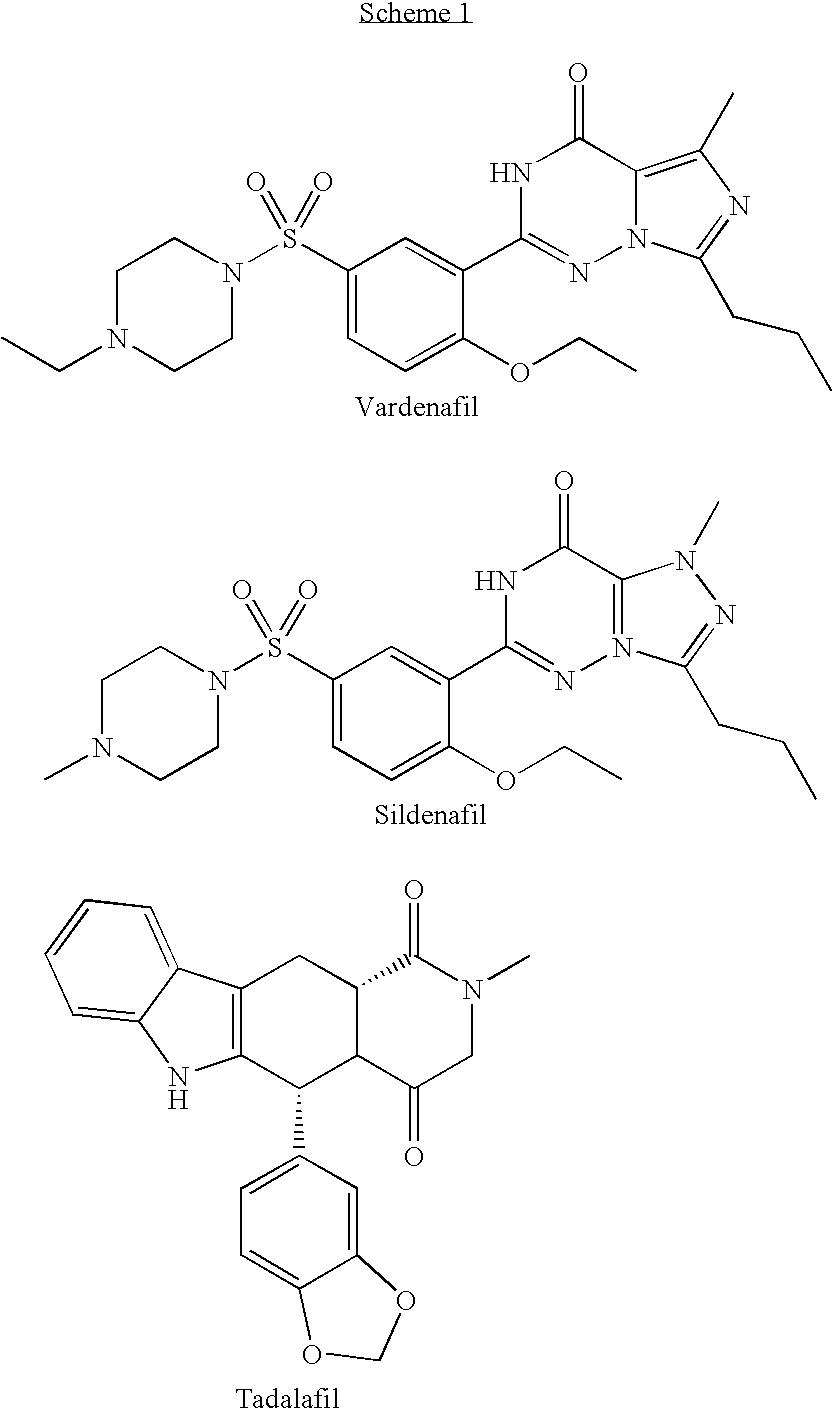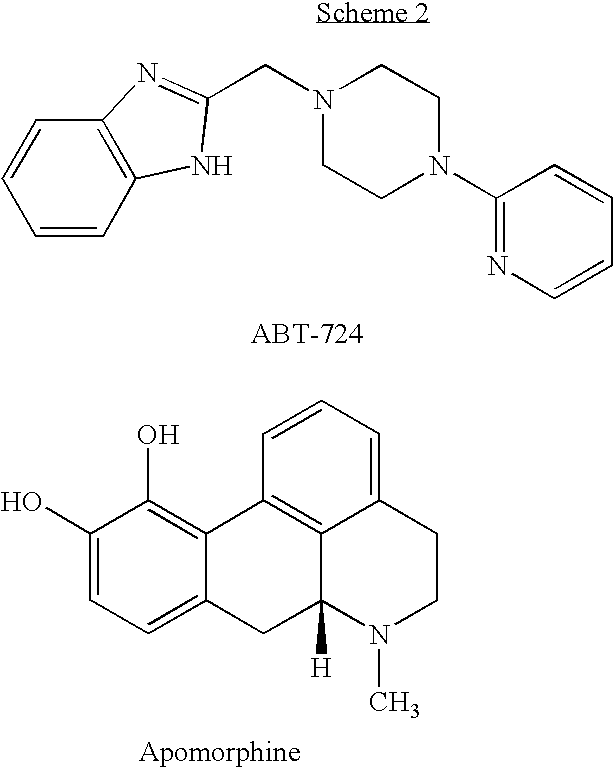Heterocyclic Compounds And Uses Thereof In The Treatment Of Sexual Disorders
- Summary
- Abstract
- Description
- Claims
- Application Information
AI Technical Summary
Benefits of technology
Problems solved by technology
Method used
Image
Examples
example 1
Preparation of Family 1 Compounds—General Procedure
[0470]The general synthetic pathway for preparing Family 1 compounds is depicted in Scheme I below:
wherein:
[0471]R* is a suitable leaving group such as, for example, halide, mesylate and triflate, and is preferably halide (e.g., chloride).
[0472]HNR** is a cyclic (alicyclic or aromatic) nucleophile, containing a nucleophilic nitrogen atom, preferably selected from the following groups of compounds:
and
K, Q, M, Y, Ra, R″, R2, R6-R14 are as defined hereinabove for general Formula I.
[0473]Approximately equimolar amounts of 2-(chloromethyl)quinazolin-4(3H)-one (or a derivative thereof in which the quinazolinone is substituted) and a cyclic nucleophile (HNR** in Scheme I above) are dissolved in a polar solvent such as DMF. After a few seconds, an excess of a base (e.g., triethylamine) is added, and the reaction is stirred until no traces of reactant materials are observed by TLC. A further excess of the base is then added along with an exc...
example 2
Preparation of Family 2 Compounds—General Procedure
[0482]The general synthetic pathway for preparing Family 2 compounds is depicted in Scheme II below:
wherein:
[0483]J is the substituted or non-substituted 4H-chromen-4-one, chroman-4-one, or 4H-benzo[e][1,3]oxazin-4-one heterocyclic core moiety for family 2 compounds, as defined hereinabove;
[0484]HNR** is a cyclic nitrogen-containing nucleophile such as:
and
Y and R6-R13 are as defined hereinabove for general Formula I.
[0485]Methyl 4-oxo-4H-chromene-2-carboxylate (or a derivative thereof in which the oxochromene is substituted, J in Scheme II above) is dissolved in an alcoholic solvent (e.g., methanol) at room temperature, and a reducing agent (e.g., NaBH4) is slowly added to the solution until the starting material is no longer detected by TLC. The solvent is then evaporated and the resulting residue is mixed with water. The pH of the resulting mixture is adjusted to between 5 and 9, to prevent decomposition of the chromone. The water...
example 3
Preparation of Family 3 Compounds—General Procedure
[0497]The general synthetic pathway for preparing Family 3 compounds is depicted in Scheme III below:
wherein:
[0498]R* is a suitable leaving group as described herein;
[0499]HNR** is a nitrogen-containing cyclic nucleophile such as, for example:
and
[0500]Y, K, R2, R6-R13, and Ra-Rd are as defined hereinabove for Formula I.
[0501]Approximately equimolar amounts of 2-(chloromethyl)-4H-pyrido[1,2-a]pyrimidin-4-one (or a derivative thereof in which the pyridopyrimidine is substituted and / or in which the chloro is replaced by another leaving group) and a cyclic amine (HNR** in Scheme III above) are dissolved in a polar solvent (e.g., DMF). After a few seconds, an excess of a base (e.g., triethylamine) is added, and the reaction mixture is stirred at room temperature overnight. A further excess of the base is then added along with an excess of water and the reaction mixture is cooled. The precipitated solid is collected by vacuum filtration a...
PUM
| Property | Measurement | Unit |
|---|---|---|
| Volume | aaaaa | aaaaa |
| Fraction | aaaaa | aaaaa |
| Fraction | aaaaa | aaaaa |
Abstract
Description
Claims
Application Information
 Login to View More
Login to View More - R&D
- Intellectual Property
- Life Sciences
- Materials
- Tech Scout
- Unparalleled Data Quality
- Higher Quality Content
- 60% Fewer Hallucinations
Browse by: Latest US Patents, China's latest patents, Technical Efficacy Thesaurus, Application Domain, Technology Topic, Popular Technical Reports.
© 2025 PatSnap. All rights reserved.Legal|Privacy policy|Modern Slavery Act Transparency Statement|Sitemap|About US| Contact US: help@patsnap.com



